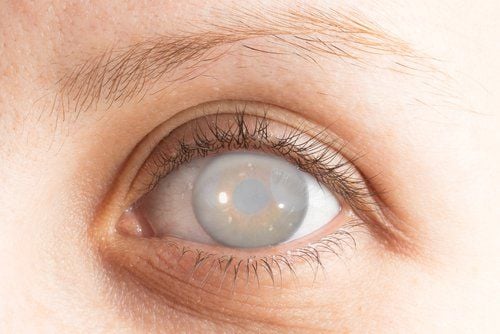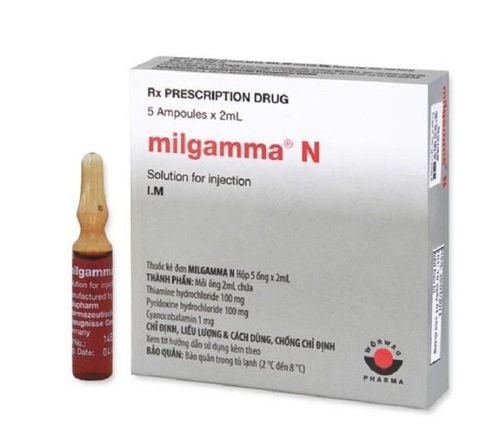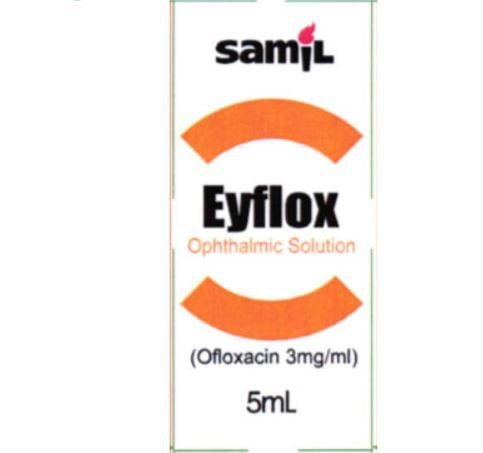This is an automatically translated article.
Optic neuritis is common in women, especially at a young age, the disease can cause subacute vision loss with pain when moving the eyeball. So what is optic neuritis? Please find information through the following article.
1. What is optic neuritis?
Optic neuritis or optic neuritis is a disease caused by inflammation that causes degeneration of the myelin sheath of the optic nerve.
Optic neuritis can occur in the setting of multiple sclerosis and neuromyelitis optica. In which, neuromyelitis optica is a combination abnormality between optic nerve demyelination and transverse myelitis.
Therefore, neuromyelitis optica is classified in a special group of acute transverse myelitis. After an infection (usually a virus), there will be a loss of the myelin sheath outside the optic nerve fiber, mainly in the optic interference with a transverse inflammatory lesion of a segment of the spinal cord. anywhere along the spinal cord, but most often in the cervical and dorsal spinal cords.
Optic neuritis seriously affects the patient's vision, can cause blindness and severe pain if not treated promptly. The disease can cause vision loss on one or both sides or progress from one side to the other.
Previously, optic neuritis was previously considered a variant of multiple sclerosis but is now recognized as a separate disease. The causes of the disease are diverse, but most often it is after a bacterial, viral or fungal infection. In addition, tumors, trauma or autoimmune problems can also cause optic neuritis.

Bệnh viêm thị thần kinh có thể gây biến chứng mất thị lực
2. Symptoms of optic neuritis
Manifestations of acute optic neuritis usually cause visual impairment in one eye, progressing rapidly, may spread to both eyes with pain when moving the eyeball.
In the setting of multiple sclerosis, patients with optic neuritis may have recurrent episodes, meaning that there may have been a loss of vision in one or both sides before, but the patient did not notice it.
In the setting of neuromyelitis optica, the patient presents with a combination of optic neuritis affecting vision and severe transverse myelitis, causing muscle weakness and sensory disturbances below the lesion site.
However, the majority of patients will develop optic neuritis before presenting with symptoms of acute transverse myelitis. Signs and symptoms of optic neuritis include:
Color perception disorder: Occurs in one or both eyes, this disorder may be more important than vision loss; Sensation of pain in the eyeball or pain behind the eye socket: Usually associated with decreased visual acuity. Pain increases with patient eyeball movement and may occur before complete loss of vision; Uthoff's sign: When the patient is active or fever causes increased body temperature, visual acuity also decreases; Pulfrich's sign: When one side of the optic nerve is inflamed, the conduction capacity is disproportionate compared to the opposite side, causing the patient to see objects change from a straight line to a curve.

Người bệnh viêm thị thần kinh sẽ có biểu hiện đau mắt dữ dội
The pupil of the affected eye has reduced light reflection of: The comagnet can be in the form of a relative afferent lesion (RAPD) or a Marcus Gunn pupil; Vision loss: The patient's visual acuity is reduced from mild to complete blindness, which can occur in one or both eyes; Abnormalities in contrast sensitivity: Occurs in most patients with optic neuritis, often associated with reduced color perception; Visual impairment: Anomalies include central dot, center edge, arc spot, nose jump or semi-horizontal defect of the field of vision; Ophthalmoscopy: This is a method to help determine the exact location of optic neuritis, in which 1⁄3 of the patients are optic discitis with signs of optic disc edema, constriction, slightly blurred margin, protrusion. with surrounding bleeding. The remaining cases in the form of retrobulbar optic neuritis will not detect lesions on ophthalmoscopy. In neuromyelitis optica, besides the manifestations of optic neuritis, there are also manifestations of acute transverse myelitis:
Muscle paralysis: The paralyzed muscles can be respiratory muscles (intercostal muscles, diaphragm). ) or muscles of the upper and lower extremities; Sensory disturbances below the inflammatory pulp segment: Including abnormalities such as numbness, tingling, burning or sharp pain in places such as neck, back or chest... Round muscle disorder: The patient has urinary retention, constipation.
3. Diagnosis of optic neuritis
Based on the clinical signs of optic neuritis, a number of paraclinical methods to help accurately diagnose this pathology include:
Magnetic resonance imaging (MRI): This is a sensitive imaging tool and high specificity in detecting optic neuritis and central nervous system white matter lesions; Visual evoked potential: Indicated in patients with suspected optic neuritis, which may be abnormal even when the magnetic resonance imaging is normal; Besides, a number of other tests help diagnose and exclude optic neuritis:
Erythrocyte sedimentation rate; Thyroid function test; Testing for antinuclear antibodies; Some pathologies need to be distinguished in the diagnosis of optic neuritis:
Ischemic disease of the optic nerve; Leber hereditary or toxic optic neuropathy; In addition, diseases that cause compression of the optic nerve such as: Thyroid-related eye disease, tumor, aneurysm or other orbital diseases.

Chụp MRI cho phép chẩn đoán bệnh viêm thị thần kinh
4. Treatment of optic neuritis
Optic neuritis is a serious disease, difficult to completely cure, so the main treatment is to prevent, slow down and reduce the severity of the progressive exacerbation:
Corticosteroid therapy alone or in combination combination of immunosuppressive drugs or immunosuppressive drugs alone. Among these drugs, methylprednisolone and azathioprine are often indicated in combination. Plasma exchange if the patient does not respond to anti-inflammatory corticosteroid therapy. The aim is to remove the antigen-antibody complexes remaining in the patient's blood causing optic neuritis; Rituximab or antibodies against B cells help to reduce the production of IgG antibodies, which contributes to the stabilization of the patient's condition; Treatment of symptoms, abnormalities combined. Optic neuritis can seriously affect the vision of the eye if not examined and treated promptly. Therefore, when you have symptoms of the disease, you should go to medical centers for examination and treatment, to avoid affecting your health later.
Vinmec International General Hospital is the address for examination, treatment and prevention of diseases. When performing the examination process at Vinmec, customers will be welcomed and used modern facilities and equipment along with perfect medical services under the guidance and advice of experts. Good doctors, well-trained both at home and abroad.
Please dial HOTLINE for more information or register for an appointment HERE. Download MyVinmec app to make appointments faster and to manage your bookings easily.













